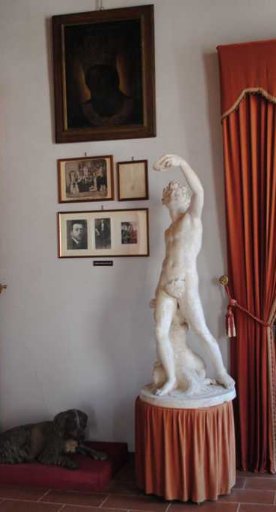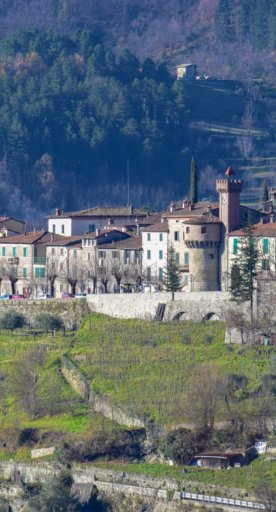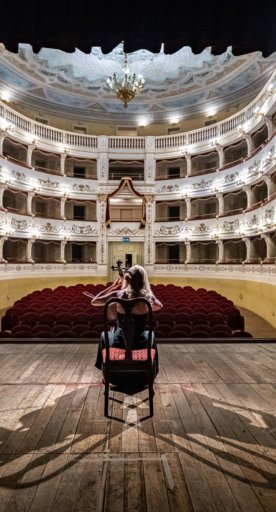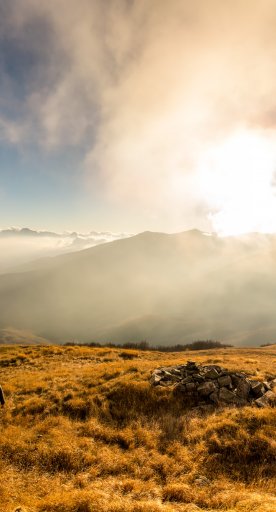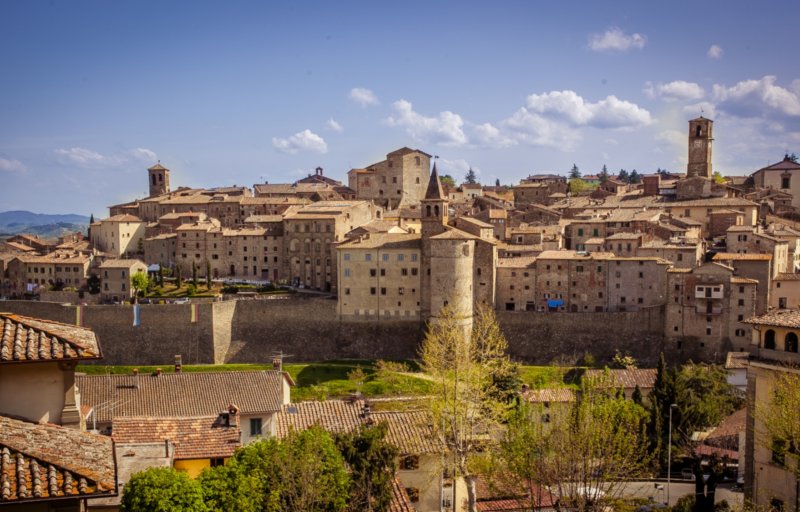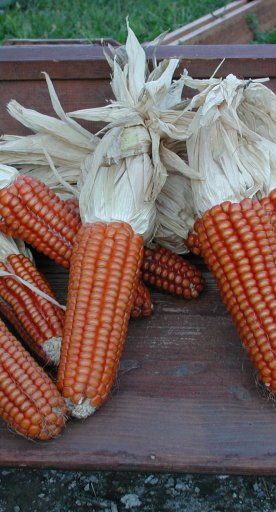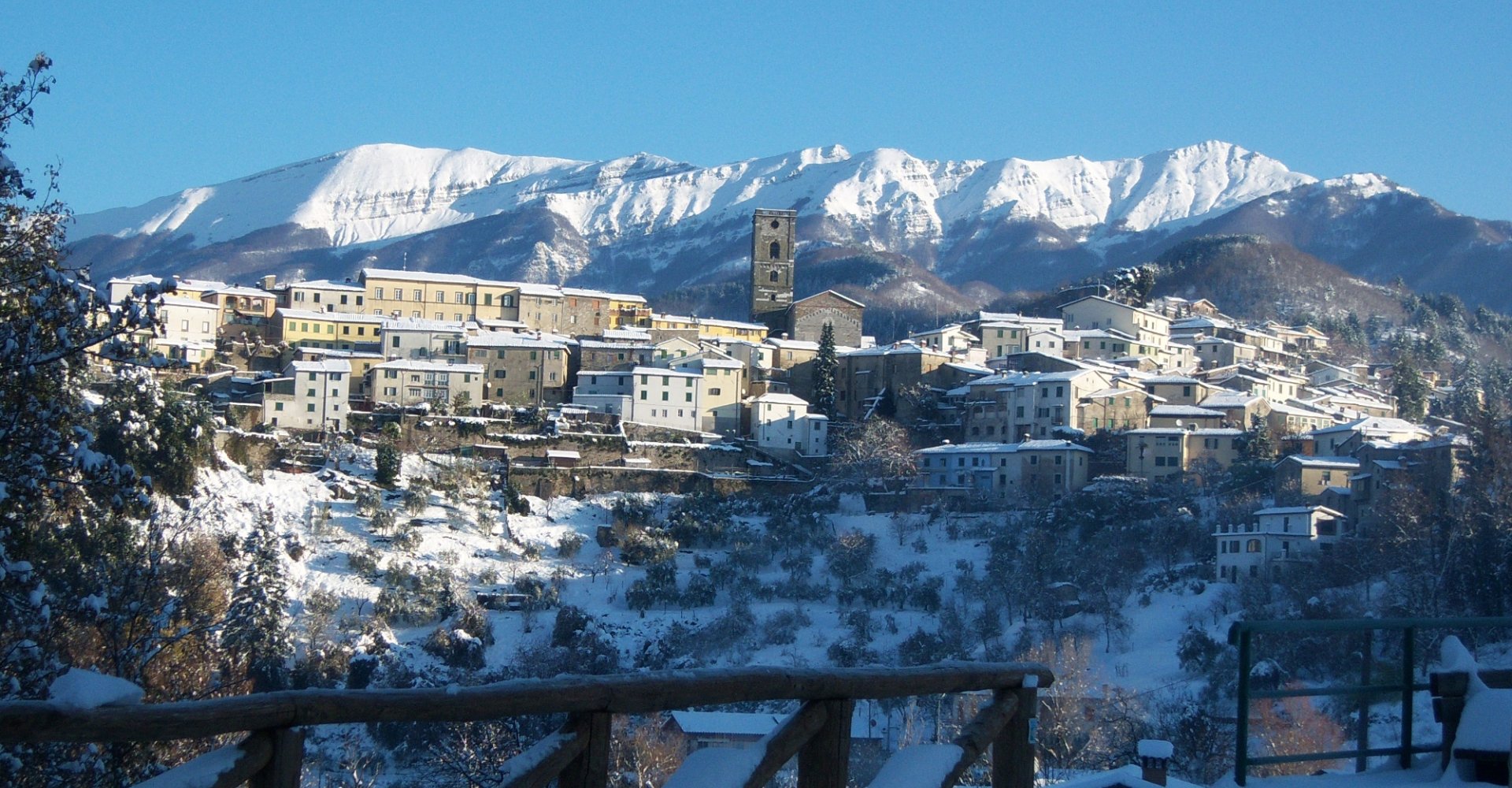
Coreglia Antelminelli
A historic Lucca outpost, known for its craftsmanship of plaster figurines
Coreglia Antelminelli is a mountain town in in the Serchio Valley, located in a splendid panoramic position of the Apennines. The earliest mentions of the town date to the 10th century and attest to how this community has been tied to Lucca’s fortunes since its foundation.
Coregilia was considered a strategic point in the Middle Ages yet despite being equipped with several strongholds, it suffered a long siege during the battle between the Guelphs and Castruccio Castracani’s army, who forced them to surrender.
After Castruccio’s death, King John of Bosnia, Lord of Lucca, granted the role of Vicario of Coreglia to Ciomacco Mugia and Sante Castracani. However, the Elders, sensing the incompetence of Castracani, asked Emperor Charles IV to replace him with Francesco Castracani degli Antelminelli, who, once nominated Vicario of Coreglia, appointed himself Count. Now a Vicario, he was no longer content with being a simple vassal and conspired to become Lord. At this point, the General Council decided to punish his corruption by confiscating his castles. Coreglia then fell into the hands of the Florentines, from whom Francesco Castracani took back the town in 1352. His goal was to obtain from Emperor Charles IV in 1355 the much desired transformation of the Vicariate into a Countship, with the right of handing down the title and fief to his successors. He was succeeded by his son Niccolao, Lord until 1369, when Lucca restored the historical Vicars. In 1362, Coreglia added Antelminelli to its name, having long been the home of this important family.
What to see in Coreglia Antelminelli
With the internal fighting at an end, the Coreglia townspeople began the artisan and export activity that would eventually spread throughout the world thanks to the figurinaio: the production of plaster figurines. It’s no coincidence that the most important attraction in Coreglia is the Museum of Plaster Figurines and Emigration, which boasts a vast range of statuettes, inviting visitors to explore the styles of this art form and the unique trend of emigration that brought the figurinaio, or plaster cast artisans, to export their knowledge to every corner of the known world. In addition to the well-known 18th-century cats blackened with smoke, the museum is also home to a collection of objects inspired by the Sacred Texts and popular legends, images of domestic life and examples of the trades of the past: chimneysweeps, gypsies, laundresses, urn bearers and so on.
Other than the museum, the village of Coreglia is also home to the Church of San Martino, built in the 9th century and inside which are exquisite works of art, like an Our Lady of the Rosary painted by Pietro Sorri in 1598. The Fortress is also important, an imposing military structure that probably dates to the Romanesque era. Make sure to also visit the Castellan Church of San Michele, built opposite the 12th-century fortress and home to a painting depicting the Archangel St. Michael (14th century) and a beautiful Annunciation from the Pisa school (1352). The massive bell tower – previously known as the Castruccio Castracani Tower – is also particularly striking, erected in the 11th century.
With the internal fighting at an end, the Coreglia townspeople began the artisan and export activity that would eventually spread throughout the world thanks to the figurinaio: the production of plaster figurines. It’s no coincidence that the most important attraction in Coreglia is the Museum of Plaster Figurines and Emigration, which boasts a vast range of statuettes, inviting visitors to explore the styles of this art form and the unique trend of emigration that brought the figurinaio, or plaster cast artisans, to export their knowledge to every corner of the known world. In addition to the well-known 18th-century cats blackened with smoke, the museum is also home to a collection of objects inspired by the Sacred Texts and popular legends, images of domestic life and examples of the trades of the past: chimneysweeps, gypsies, laundresses, urn bearers and so on.
Other than the museum, the village of Coreglia is also home to the Church of San Martino, built in the 9th century and inside which are exquisite works of art, like an Our Lady of the Rosary painted by Pietro Sorri in 1598. The Fortress is also important, an imposing military structure that probably dates to the Romanesque era. Make sure to also visit the Castellan Church of San Michele, built opposite the 12th-century fortress and home to a painting depicting the Archangel St. Michael (14th century) and a beautiful Annunciation from the Pisa school (1352). The massive bell tower – previously known as the Castruccio Castracani Tower – is also particularly striking, erected in the 11th century.
Nearby
Garfagnana, alongside the Middle Serchio Valley, is utterly enchanting, nestled between the Apuan Alps and the Tuscan-Emilian Apennines. Here, among chestnut woods and unspoiled nature, small stone villages and picturesque scenery are hidden.
Barga is one of Italy’s most beautiful villages and is a perfect example of a typical medieval village structure, with a city wall allowing access through three doors: Porta Reale, Porta Macchaia and Porta di Borgo. Wandering through alleys, taverns and small squares, you’ll arrive in front of the majestic Cathedral of San Cristoforo. The cathedral is also mentioned in a poem by Giovanni Pascoli, who once lived in Castelvecchio, a village near Barga from where he could hear the sound of the cathedral bells.
The house the author lived in was declared a national monument and has become the Giovanni Pascoli House Museum; it’s spread over three floors and is surrounded by a vegetable garden, garden and a chapel.
Garfagnana, alongside the Middle Serchio Valley, is utterly enchanting, nestled between the Apuan Alps and the Tuscan-Emilian Apennines. Here, among chestnut woods and unspoiled nature, small stone villages and picturesque scenery are hidden.
Barga is one of Italy’s most beautiful villages and is a perfect example of a typical medieval village structure, with a city wall allowing access through three doors: Porta Reale, Porta Macchaia and Porta di Borgo. Wandering through alleys, taverns and small squares, you’ll arrive in front of the majestic Cathedral of San Cristoforo. The cathedral is also mentioned in a poem by Giovanni Pascoli, who once lived in Castelvecchio, a village near Barga from where he could hear the sound of the cathedral bells.
The house the author lived in was declared a national monument and has become the Giovanni Pascoli House Museum; it’s spread over three floors and is surrounded by a vegetable garden, garden and a chapel.
Events
The perfect time to visit the village is August 15, when Medieval Day is celebrated with the Corteggio Storico della Compagnia degli Alabardieri della Vicaria di Coreglia, a popular festival where oil is brought to the Madonna dell'Annunziata in the early Romanesque church of San Martino.
The perfect time to visit the village is August 15, when Medieval Day is celebrated with the Corteggio Storico della Compagnia degli Alabardieri della Vicaria di Coreglia, a popular festival where oil is brought to the Madonna dell'Annunziata in the early Romanesque church of San Martino.
Dishes and typical products
Throughout Lucca, excellent meats are produced including sausages and prosciutti. In Coreglia Antelminelli’s surroundings, the Biroldo della Garfagnana (a sort of mallegato that uses the less prized meats of the pig) and the Mondiola della Garfagnana (a large salami in characteristic U-shape, tied with a bay leaf) are made. There are also numerous dairy products that can be tried such as the Garfagnina cow ricotta or the Apuan goat cheese.
Throughout Lucca, excellent meats are produced including sausages and prosciutti. In Coreglia Antelminelli’s surroundings, the Biroldo della Garfagnana (a sort of mallegato that uses the less prized meats of the pig) and the Mondiola della Garfagnana (a large salami in characteristic U-shape, tied with a bay leaf) are made. There are also numerous dairy products that can be tried such as the Garfagnina cow ricotta or the Apuan goat cheese.
